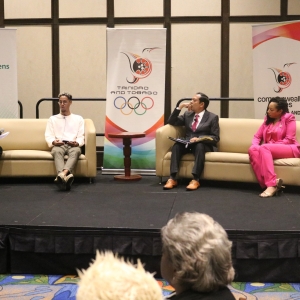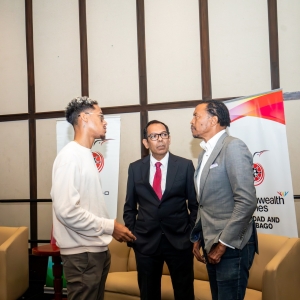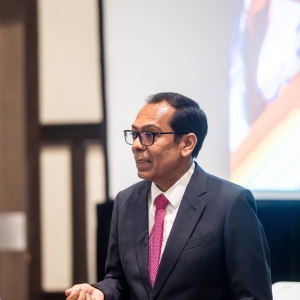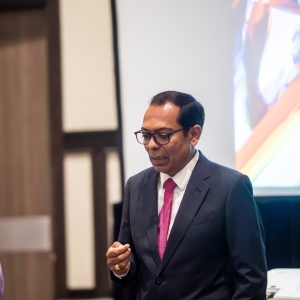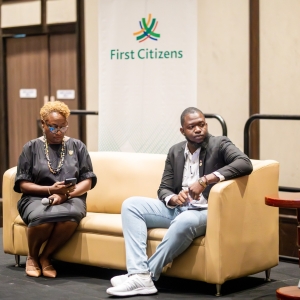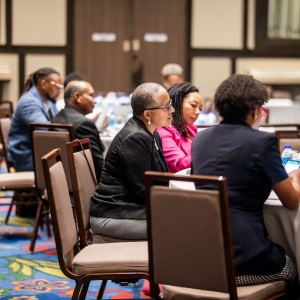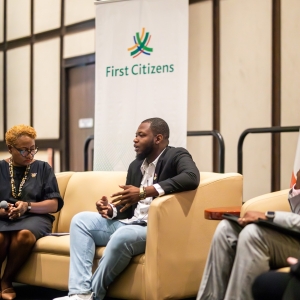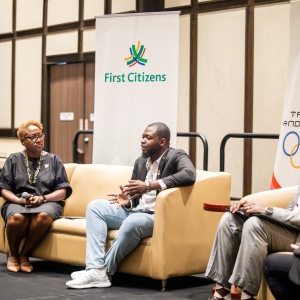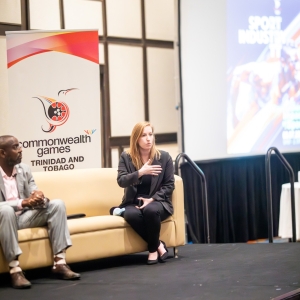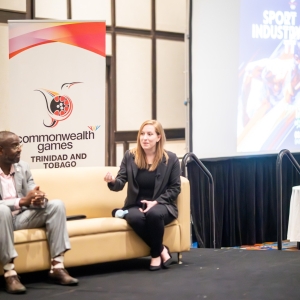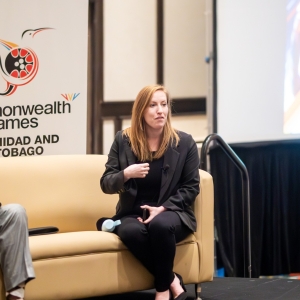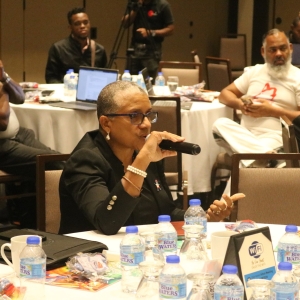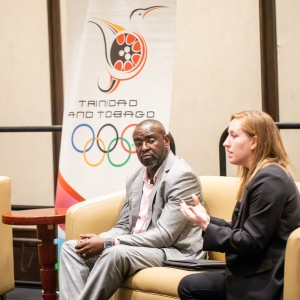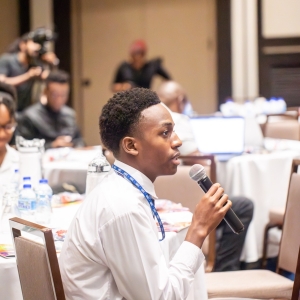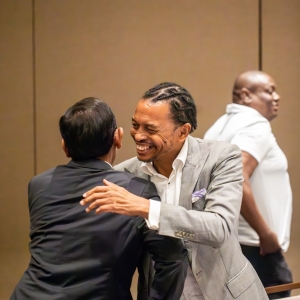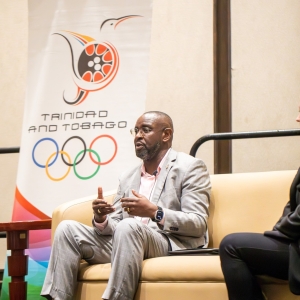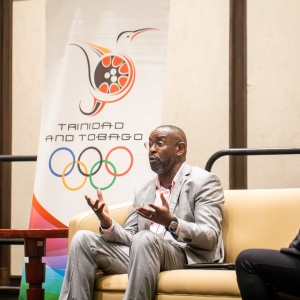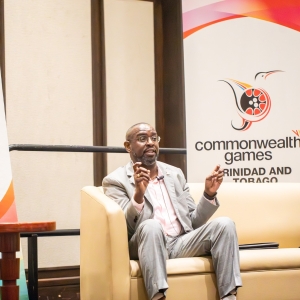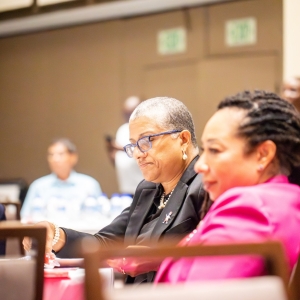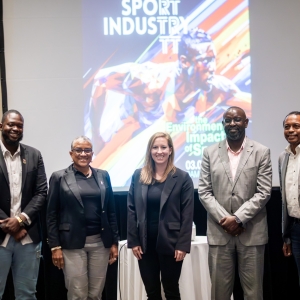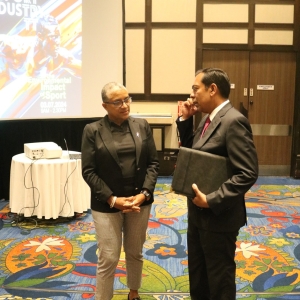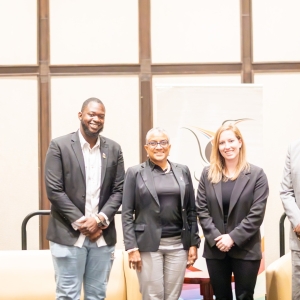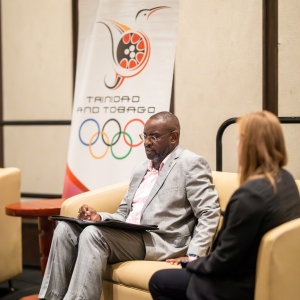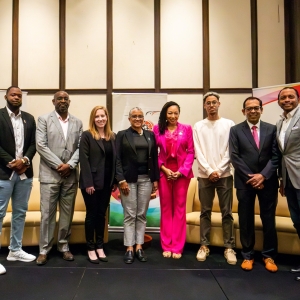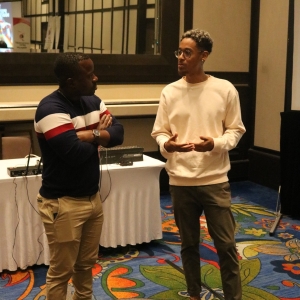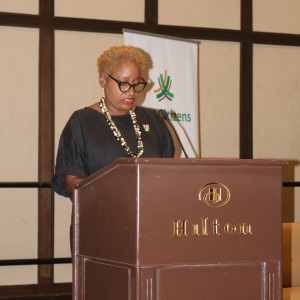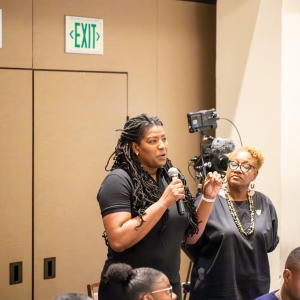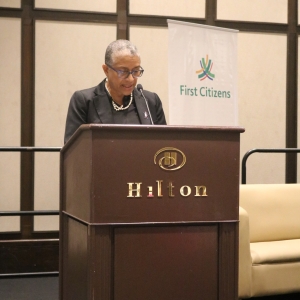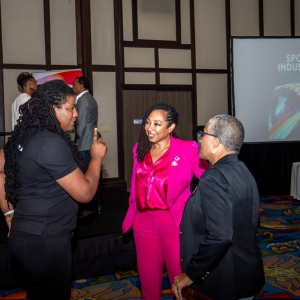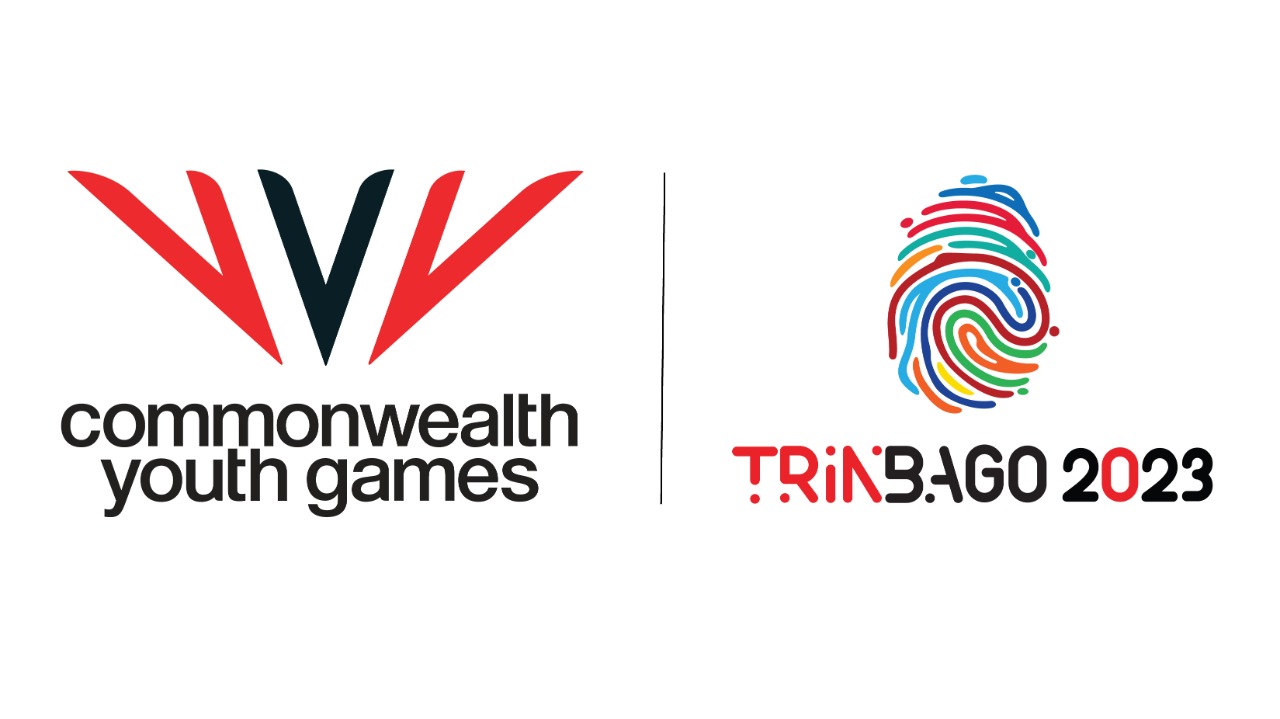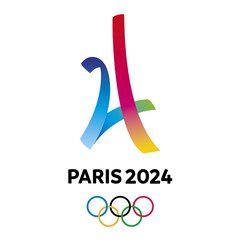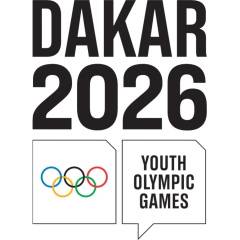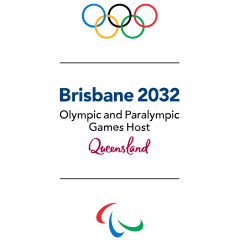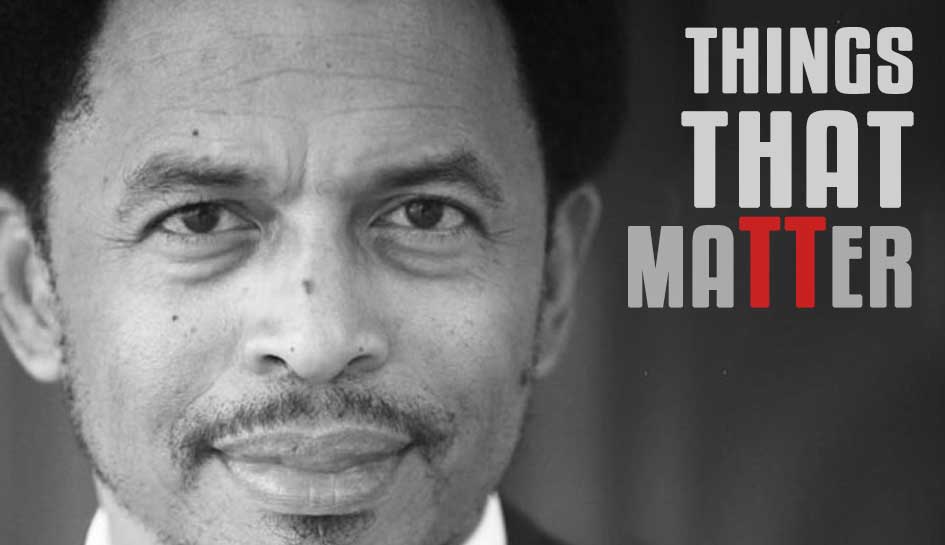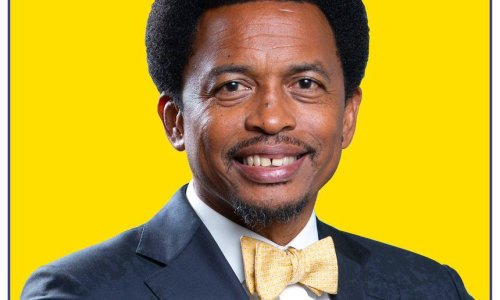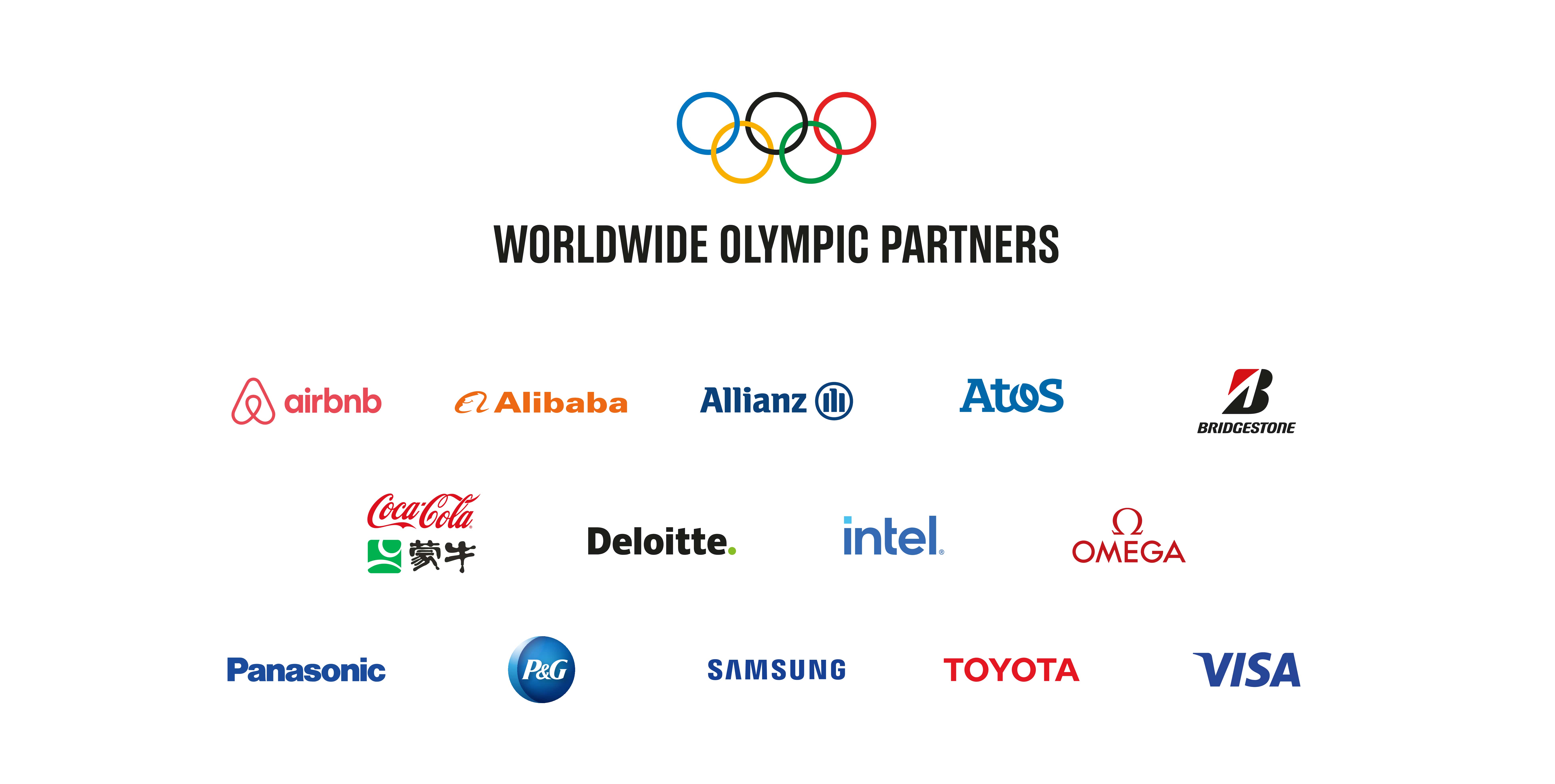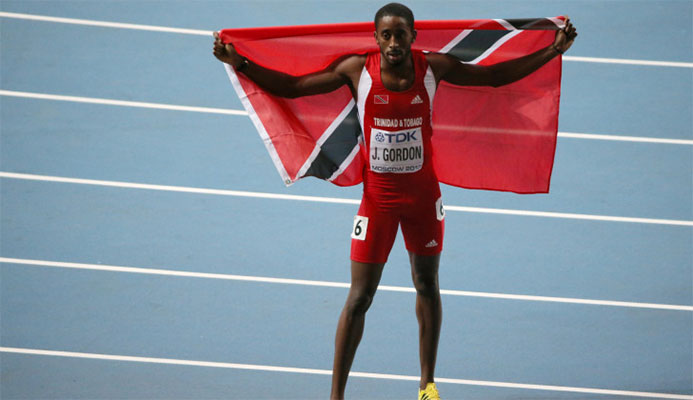Towards the end of this month’s broadcast of the BBC Sports Personality of the Year Awards, Michael Johnson introduced the Lifetime Achievement Award, which was presented this year to Britain’s retired former Olympic and world heptathlon champion Jessica Ennis-Hill. In the course of his short address to the camera the former US sprinter - who finished his athletics career with four Olympic and eight world golds - spoke of how top performers had to accept and then deal with the pressure of expectation.
Fifteen minutes later the peak live TV audience of 9.4million witnessed a technical hitch at the climax of the show as the link to the winner, Mo Farah, went down. With two or three minutes airtime suddenly blanked out, BBC host Gabby Logan turned to Johnson to fill the gap with an appreciation of Farah’s career and achievements.
After admitting with a slightly lopsided grin that he had hoped he would not have to be called upon in this way - human after all! – Johnson – to slip briefly into athlete-speak – focused and executed, underlining the way Farah had risen to expectation and delivered time and again despite having to combat every kind of tactic from the rivals who attempted to gang up on him over the years.
Having talked the talk, Johnson followed up by, well, by talking the talk. How, one wondered, did that pressurised moment compare with others he had faced in his career?
“As a professional television pundit it’s no different than being an athlete,” he tells insidethegames. “Preparation is everything. So being called on to help in a challenging moment is something I’m prepared for working in television. Having worked with Gabby over the years in the studio certainly helped.”
Over the years, Johnson’s remote and sometimes prickly persona has – let’s not use the dreaded “mellowed” word, but let’s at least say modified. He has become, in US parlance, a go-to guy when it comes to advice and expertise. And Logan is only the latest to have turned to him for help.
This year marked the tenth anniversary of Michael Johnson Performance, the bespoke training institute he set up in the Texan city of McKinney. Over the course of the last decade this facility, and the philosophy and approach behind it, has been utilised by elite sporting clients who range from Premier League sides such as Manchester United to NFL American Football teams such as Dallas Stars, from Formula 1 teams to National Olympic Federations.
The MJP brand has become a global one, and is about to launch on another significant expansion. The USP is Johnson himself, and his self-confessedly obsessional attention to detail – an obsession that he required to maintain a ten-year career that saw him win a first global gold at the 1991 World Championships and a last one at the 2000 Sydney Olympics.
Johnson has shaped the MJP offering through his own experience, assisted by carefully assembled groups of experts in the fields of Performance, Sports Medicine, Nutrition and Mental Skills, and also with the support of the company who sponsored him during his glory years, Nike.
At the heart of the operation is NextGen, an athletic development programme that is, according to the MJP site, “centered around the personalized training philosophy of Olympic gold medallist, Michael Johnson.
“With progressive methods, we take athletes with raw talent and develop their fundamentals to help them excel across all sports in which they compete.
“Our programs are based on years of research and scientific exploration. By utilizing our partnership with Nike, we take the latest technology and innovations in training to draw out the potential of every athlete. MJP’s NextGen Program takes athletes to the next level.”
It all sounds fine. But the proof of its effectiveness, unimpeachably, is the list of current clients.
The MJP centre numbers among its regulars the local National Hockey Leaguers Dallas Stars and players from the NFL American Football side Dallas Cowboys.
Johnson was personally engaged two years ago to work on the speed and strength of players in the Arsenal FC youth ranks.
“Over the years,” Johnson adds, “we have also worked with Manchester United, the Football Association, and numerous Olympic committees including Brazil, Trinidad and Tobago, China, Romania, Azerbaijan, Cayman Islands, and Japan.
“We’ve worked with athletes from all 32 teams in the NFL.
“We worked with sports as varied as Williams F1 team and Professional Bull riders….
“We have some ongoing clients who we’ve worked with for years and some clients who come in for a Two-day Advanced Athlete Assessment only. One interesting development is the expansion of our services – we have recently launched our MJP Coach Education Certification in China where we are certifying coaches and trainers on the MJP training methodology with two courses each month.
“We will launch worldwide in 2018.”
So what was Johnson hoping for when he started MJP, and how has the reality measured up?
“The vision for MJP was to assemble a group of experts in all areas of sport performance to assist and support athletes whether individual or as part of a team, to reach their full potential,” he says.
“Our mission is to help every athlete reach their full potential regardless of sport, gender, ability level, or limitation. We help sports people to be the best athlete they can be from ages nine through to professionals at the highest level, in all sports, including able-bodied and athletes with a disability.”
Asked if he believes MJP is offering something that rival organisations cannot match, Johnson responds:
“We don’t really compare ourselves to others. What we do is somewhat unique simply because we are not a sport specific organisation. We are sport agnostic and we focus on athleticism and performance, developing athleticism properly for youth athletes, and improving athletic performance specific to the sport of the athlete at the elite level.
“In our 10 years, we have worked with athletes from over 30 different countries and over 25 different sports. This wealth of experience gives our organisation a unique ability to develop solutions to the challenges faced by sports organisations and athletes in developing and improving athleticism and sport performance.
“I think many people don’t understand how MJP performance services work. We are not just a facility where people come to train and we don’t have just one solution, which is simply training with us.”
The list of MJP services includes tailored training programmes, visiting athletic performance consulting services, physical therapy and injury rehabilitation, bespoke training camps, coach education and input from Nike sport scientists.
“We have brought together experts from all areas of developing and improving athleticism,” Johnson says. “And with all of those experts cooperating together with the athlete in the centre of it all, we are uniquely positioned to help the athlete reach their full potential. This is exactly what I attribute my career longevity and consistency to, and was the reason behind starting Michael Johnson Performance.
“I have certainly tried to instil a high level of attention to detail into our organisation, but we are successful as an organisation because of the passion for sport and helping athletes that our staff members have.
“Many of them have played sport and didn’t reach their full potential because of injury or lack of good coaching and support, and they are committed to ensuring this doesn’t happen to other athletes. We understand the tragedy of sport potential that is unrealised.”
Johnson adds that the link established the Arsenal FC Academy has been a hugely flexible one.
“Our work with Arsenal academy over the years has spanned coach education seminars, specific athletes sent to us in the United States, and us sending a coach to their Greece academy to implement a new athletic development programme.”
The MJP promotional videos maintain that tailored programmes are available for individual roles within the team, such as – in the case of football - a wide midfielder or central defender. Is this the case?
“Our programmes are bespoke at the elite level and developed based on initial consultation with the client and takes into account the challenges they are facing and the goals and objectives they have,” Johnson says.
“So yes, if a footballer who plays the midfield position is looking to be more effective on the pitch and has an idea of what area he wants to improve, we’re going to look at him as an athlete through our Advanced Athlete Assessment and we’re going to look at the position he plays and the specific athletic requirements of that position, and develop a programme to achieve that athlete’s objectives.
“That will be based on those two things: the unique characteristics of the athlete and the specific needs of the sport, and the position within the sport that the athlete plays. This applies whether the athlete is a footballer, a track and field athlete, a baseball player, skier, or golfer.”
Asked if there are MJP outcomes that have been particularly surprising or pleasing to him over the years, Johnson responds: “With our youth programmes over the last nine years we’ve typically seen a 2-3% per week measurable improvement across key markers of athleticism, including speed, strength, and power. This year we are achieving 4-6% improvement per week.
“A few notable elite level successes over the years come to mind. Jehue Gordon, the Trinidad and Tobago 400 hurdler, was diagnosed with a specific imbalance discovered through our assessment, which we worked with his coach to correct, and later that year he won the IAAF World Championship gold.
“Richard Thompson, a sprinter from Trinidad and Tobago, presented major opportunities to improve his training after undergoing our evaluation. We worked with his coach to incorporate changes to his training, resulting in a personal best time for him that year.
“Su Bingtian became the first Chinese athlete to run the 100m in under 10 seconds after we worked with him and his coach in China for two years.
“Our NFL Combine training programme has numerous success stories of athletes improving their ultimate draft position based on their performance at the NFL Combine for which we have trained them. These improvements in draft position can mean millions of dollars to athletes.”
Another MJP promotional video clip focuses on the 19-year-old UAE sprinter Talal Al Alami, who says: “they analysed me like a robot and tried to fix those little errors.” It was noticed that his hip extension and arm movements were uneven, and by stretching his shoulders he was turned into “a more symmetrical athlete.”
So here’s the question for Johnson – what would they have made of him as a 19-year-old? Would they have tried to deal with the striking upright stance that caused one observer to comment that he ran like a guardsman on parade? Or would they have realised – this works; so don’t try and fix it?
“We take every athlete through our Advanced Athlete Assessment first before training or recommending any modifications to the athlete’s current training programme or technique,” Johnson replies.
“During our Advanced Athlete Assessment we are looking for areas in which the athlete may be at risk for injury and where there may be opportunities for improvement in their training. This is done through assessing structural, functional, and sport specific performance characteristics based on our extensive data base and collective expertise working with athletes of all sports.
“This is exactly what my coach Clyde Hart did when he recruited me to Baylor University -never mentioning my running style. Because his assessment of me as an athlete was much more than a simple eyeball comparison to other athletes, but a more scientific and data-driven assessment of my inherent advantages and weaknesses.
“Almost every coach who recruited me told me that I would need to change my running style, with the exception of Clyde. My friends made fun of me, and it was all in good fun. My classic response to ‘You look funny when you run’ was ‘Yeah, and you look slow when you run!’”
Having witnessed almost all of Johnson’s big career moments – even his astonishing 19.85 200m in 1990 on a windswept Meadowbank Stadium track in Edinburgh – it seemed to me that winning the 1996 Olympic 200m title at the Atlanta Games in a world record of 19.32 gave him the greatest pleasure. Was that so?
“From 1990 to Atlanta 1996 the 200 metres was my favourite event and I was after the world record and Olympic gold in that event,” he says. “From 1996 to my retirement in 2000, my focus switched to the 400 metres and breaking the world record in that event.
“But my favourite moments in my career were 1995 and 1996 when I was able to compete in both events. It pained me in other years when I had to choose one of my events and watch someone else win the other.”
Johnson is still the only male athlete in history to win the 200 and 400m at the same Olympics. Does he see anyone matching that anytime soon? Wayde Van Niekerk tried the double at this summer’s London World Championships but ran out of energy – and time. The programme, with no rest day, didn’t help him. Does Johnson think he can be the one to match that landmark performance?
“It’s a very difficult double,” he says, “but easier now that there are only three rounds of each as opposed to four rounds when I did it. You never know. It depends on the athlete, their training, and the competition. Van Niekerk is obviously uniquely talented to be world class and a medallist at both events, but it appears his training wasn’t sufficient for the double this year.
“The training for the double is quite tricky and I don’t think many athletes and coaches realise this. Competition is an important and often overlooked factor. If Bolt was still competing we wouldn’t be talking about Van Niekerk succeeding with this double."
Johnson’s 19.32 in Atlanta took more off the 200m record than anyone before – or since. Does he think that is the record of his that may remain longest?
“Probably,” he replies, “but the double could last longer. Four consecutive 400 metres world titles is pretty tough too…”
As he saw Usain Bolt heading for the line in the Berlin 2009 200m, or Van Niekerk doing the same in the Rio 400m, did a little part of Johnson, as world record holder, shout: “Fall over!”?
“Not at all,” he replies. “And my reactions to both of those was what I felt at the time as a fan of the sport, which is what I am now. I realise now that I am quite different from most retired record holders.
“Since my retirement from the sport until the time each record was broken I have never viewed myself as ‘still the world record holder’ but rather I have viewed myself as the person who broke both world records, because that is what I’m most proud of, that I accomplished the feat of breaking them when I was competing.
“And that accomplishment and pride that I have of the accomplishment didn’t change when those records were broken. I still accomplished what I did, so having broken the 200 record in 1996 and the 400 in 1999, I feel no different about my accomplishment today when those records are held by someone else, than I did in 2004 when I was retired and still held both records.”
So how long does he think Bolt’s world 100 and 200m marks will last?
“Good question,” he says, “but it doesn’t have a good answer. No one knows about records or how long they’ll last so I don’t speculate. However, I don’t think they will be broken by any current sprinter. But 10 years from now another great athlete may come along with unique talent and break both of them.”
An athlete, perhaps, who has been fine-tuned by the MJP system? We will have to wait and see…

